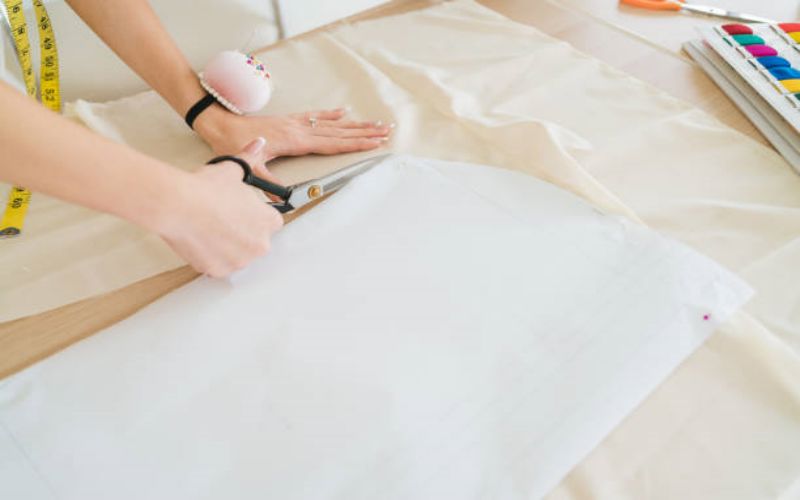Table of Contents

The Basics of Sewing Nylon Fabric
Sewing nylon fabric can be a challenging task if you don't have the right techniques and tools. Whether you are working with a delicate nylon chiffon or a sturdy nylon webbing, it's important to know how to handle this versatile material. In this guide, we will walk you through the process of sewing nylon fabric, from choosing the right needles and threads to mastering different stitches. By following these steps, you'll be able to create beautiful garments, accessories, and home decor items using nylon fabric.
Choosing the Right Needles and Threads
When it comes to sewing nylon fabric, using the right needles and threads is crucial. Nylon is a slippery material, so you need to make sure that your needles and threads can handle it. For general sewing, it's recommended to use a size 11 or 14 universal needle. However, if you are working with a lightweight nylon fabric like chiffon, a size 9 or 11 needle would be more suitable. As for threads, polyester threads are the best choice for sewing nylon fabric. They are strong, durable, and resistant to fraying.
Preparing the Nylon Fabric
Before you start sewing nylon fabric, it's important to prepare it properly. Begin by washing and drying the fabric to remove any sizing or chemicals that may be present. This will prevent the fabric from shrinking or warping after you sew it. If you are working with a delicate nylon fabric, such as lace or organza, consider using a fabric stabilizer to add extra support. You can spray the stabilizer onto the fabric or use a stabilizer sheet, depending on the type of fabric and your personal preference.
Mastering the Stitching Techniques
When sewing nylon fabric, it's essential to use the right stitching techniques to ensure a professional-looking result. One of the most common stitches used for nylon fabric is the straight stitch. This stitch is simple yet effective for joining fabric pieces together. However, if you are working with a stretchy nylon fabric, such as nylon spandex, consider using a zigzag stitch or a stretch stitch. These stitches allow the fabric to stretch without breaking the stitches. Experiment with different stitch lengths and tensions to find the perfect combination for your project.
Dealing with Seam Finishes
Seam finishes are essential for preventing fraying and securing the edges of your nylon fabric. Since nylon is a synthetic material, it tends to fray easily. To avoid this, you can use a serger or an overlock machine to finish the raw edges of your seams. If you don't have access to these machines, you can also use a zigzag stitch or a mock overlock stitch on your regular sewing machine. Another option is to trim the seam allowances with pinking shears, which will help minimize fraying.
Working with Zippers and Fasteners
Adding zippers and fasteners to nylon fabric requires some extra care and attention. When sewing a zipper onto nylon fabric, consider using a zipper foot attachment on your sewing machine. This will allow you to stitch close to the zipper teeth without damaging the fabric. For fasteners like snaps or buttons, reinforce the fabric with interfacing before attaching them. Interfacing adds stability and prevents the fabric from stretching or tearing around the fasteners.
Pressing and Ironing Nylon Fabric
Pressing and ironing nylon fabric can be a bit tricky, as nylon is sensitive to high heat. It's important to use a low heat setting on your iron and avoid pressing the fabric for too long. To prevent shiny marks on the fabric, place a press cloth or a piece of muslin between the nylon and the iron. If you need to shape the fabric, consider using a tailoring ham or a pressing mitt to avoid direct contact with the iron. Always test a small, inconspicuous area of the fabric before ironing the entire piece.
Caring for Nylon Fabric
To ensure the longevity of your nylon fabric creations, it's important to follow proper care instructions. Most nylon fabrics can be machine washed on a gentle cycle with cold water. However, it's best to check the fabric's specific care recommendations before washing. Avoid using bleach or fabric softeners, as they can damage the fabric. When drying nylon fabric, it's recommended to air dry or use a low-temperature setting on your dryer. Finally, store your nylon fabric items in a cool, dry place away from direct sunlight to prevent fading or discoloration.
Exploring Advanced Techniques
Once you have mastered the basics of sewing nylon fabric, you can explore more advanced techniques to enhance your projects. Some popular techniques include adding decorative trims and embellishments, creating gathers or pleats for added volume, and experimenting with different types of seams and finishes. Don't be afraid to try new things and let your creativity shine through your nylon fabric creations.
Conclusion
Sewing nylon fabric may seem daunting at first, but with the right techniques and tools, it can be a rewarding experience. Remember to choose the appropriate needles and threads, prepare the fabric properly, and master the stitching techniques. Pay attention to seam finishes, work carefully with zippers and fasteners, and be cautious when pressing and ironing. Follow the care instructions to maintain the quality of your nylon fabric items. Lastly, don't be afraid to explore advanced techniques and let your creativity soar. With practice and patience, you'll be able to create stunning garments, accessories, and home decor pieces using nylon fabric.
